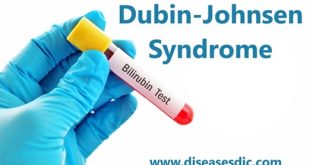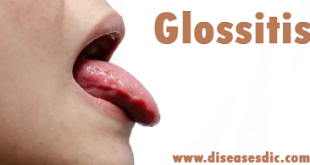Definition
Dermoid cyst is a sac-like growth located on or in the skin. It contains fluid or semisolid material. Dermoid cysts occur during fetal development and are typically present at, or shortly after, birth. A dermoid cyst is benign, meaning it is not cancerous. The cyst occurs when layers of specialized cells do not grow together properly, and cells that should be on the outside of the body become trapped inside the body, for example, cells from skin, sweat glands or hair. Over time, these cells continue to collect inside the cyst and the cyst grows. Dermoid cysts are usually found on the head, neck and face, but can occur anywhere on the body.
Dermoid cyst
Epidemiology
No information is available about the prevalence of dermoid cysts. In gynecology, the literature describes dermoid cysts as relatively rare tumors, a cystic teratoma that most often occurs in individuals aged 15-40 years. In neurosurgery, it is rare and in dermatology and pediatrics, it is relatively uncommon.
Of the 2639 eyelid tumors from a Chinese study, the 5 most common eyelid benign ones were inflammatory lesions, melanocytic nevi, papillomas, dermoid cysts and epidermoid cysts, and epithelial cysts.
Types of Dermoid cyst
Dermoid cysts tend to form near the surface of the skin. They’re often noticeable soon after birth. Some may develop deeper inside the body as well. This means diagnosing them may not happen until later in life.
The location determines its type. The more common types are:
Periorbital dermoid cyst
This type of dermoid cyst usually forms near the right side of the right eyebrow or the left side of the left eyebrow. These cysts are present at birth. However, they may not be obvious for months or even a few years after birth. The symptoms, if any, are minor. There’s little risk to a child’s vision or health. However, if the cyst becomes infected, prompt treatment of the infection and surgical removal of the cyst is essential.
Periorbital dermoid cyst
Ovarian dermoid cyst
This kind of cyst forms in or on an ovary. Some types of ovarian cysts are related to a woman’s menstrual cycle. But an ovarian dermoid cyst has nothing to do with the ovary’s function. Like other kinds of dermoid cysts, an ovarian dermoid cyst first develops before birth. A woman may have a dermoid cyst on an ovary for many years until it’s discovered during a pelvic exam.
Spinal dermoid cyst
This benign cyst forms on the spine. It doesn’t spread elsewhere. It may be harmless and present no symptoms. However, this kind of cyst may press against the spine or spinal nerves. For that reason, it should be surgically removed.
Risk factors
Dermoid cysts of the ovaries develop in women during the reproductive years. Specific risk factors are not known.
Causes
This sac-like structure results during fetal development when skin and skin structures get trapped. Their cell walls are almost similar to that of the outer skin and multiple skin structures like hair follicles, sweat glands, teeth, hair or even nerves may be present.
In the case of ovarian dermoid cysts, it usually develops from a totipotential germ cell that is retained within the egg sac (ovary). As the cell is totipotential, it can give rise to all cell orders so as to form mature tissues and recognizable structures like hair, bone, oily (sebaceous) material, neural tissue, and teeth.
Symptoms of Dermoid cyst
In most cases, the only dermoid cyst symptom is a small, painless lump under the skin. The lump may be the same color as your child’s skin, or it may be pale yellow.
It usually shows up:
- Near the eyebrow
- On the scalp
- On the chest
- Over the collarbone
If a dermoid cyst gets infected, it may:
- Hurt
- Become swollen and red
- Burst
- The infection may cause a fever.
Dermoid cyst complications
Torsion
This is the most common complication of a dermoid cyst. Classically, patients are presented with a sudden onset of severe unilateral lower abdominal pain, nausea, vomiting, and low-grade fever. Delayed diagnosis and treatment results in infarction of the ovary and the patient may lose the ovary on that side.
Rupture or Leakage
Patients presented with acute abdominal pain and internal hemorrhage and can result in hypovolemic shock.
Infection
Infection is a rare complication. The symptoms include high fever and severe lower abdominal pain.
Cancer
Only 1% of dermoid cysts are cancerous. This can be found in young woman. The diagnosis is made by surgery and pathological results.
Diagnosis and test
Your child’s healthcare provider will usually diagnose a dermoid cyst based on what it looks like and where it is. He or she will look at the cyst and surrounding areas. Your child may need imaging tests to find out if the cyst is connected to other tissue in the head and neck. Tests may include:
X-ray: The provider may order Images of the head, neck, face, or another area where the cyst is located.
CT scan: X-ray and a computer are used to make detailed images of any part of the body.
MRI: Large magnets, radio waves, and a computer make detailed images of organs and structures within the body.
Treatment and medications
A dermoid cyst is usually removed surgically by excision biopsy. Prior to surgery, it may be investigated with an ultrasound scan to determine the extent of underlying tissue involvement. If there is a nearby sinus tract, this is often explored using a sinogram.
Dermoid cyst removal surgery also called Dermoid Cyst ablation is a minimally-invasive procedure.
- A small needle and plastic sleeve enter the dermoid cyst.
- The cyst is killed (ablated) within the body.
- The body’s own “cleanup” mechanisms then remove the dead dermoid cyst cells during healing.
- The result leaves a very small scar the size of a freckle that gets becomes nearly invisible with time.
Dermoid cysts in other parts of the body such as intracranial cysts, intraspinal cysts, intra-abdominal cysts and cystic tumors of the ovary may be difficult to treat and require special surgical techniques to remove the lesion and prevent possible complications.
Prevention
Though there is no fixed method to prevent the occurrence of dermoid cysts. In cases of dermoid cysts in the ovaries, regular pelvic examinations may be needed. Also, a close watch should be kept if there is any change in your monthly cycle, which includes symptoms that accompany menstruation. Talk to your doctor about any concerns.
 Diseases Treatments Dictionary This is complete solution to read all diseases treatments Which covers Prevention, Causes, Symptoms, Medical Terms, Drugs, Prescription, Natural Remedies with cures and Treatments. Most of the common diseases were listed in names, split with categories.
Diseases Treatments Dictionary This is complete solution to read all diseases treatments Which covers Prevention, Causes, Symptoms, Medical Terms, Drugs, Prescription, Natural Remedies with cures and Treatments. Most of the common diseases were listed in names, split with categories.








I have a cyst? on my nose, next to the corner of my right eye. it bothers me with tearing and eye goo . danger?
Acne cysts aren’t dangerous on their own, but they can become infected if you pick at them. Home remedies may help you get rid of the cyst safely without the risk of infection and scarring. For appropriate treatment kindly consult a physician.